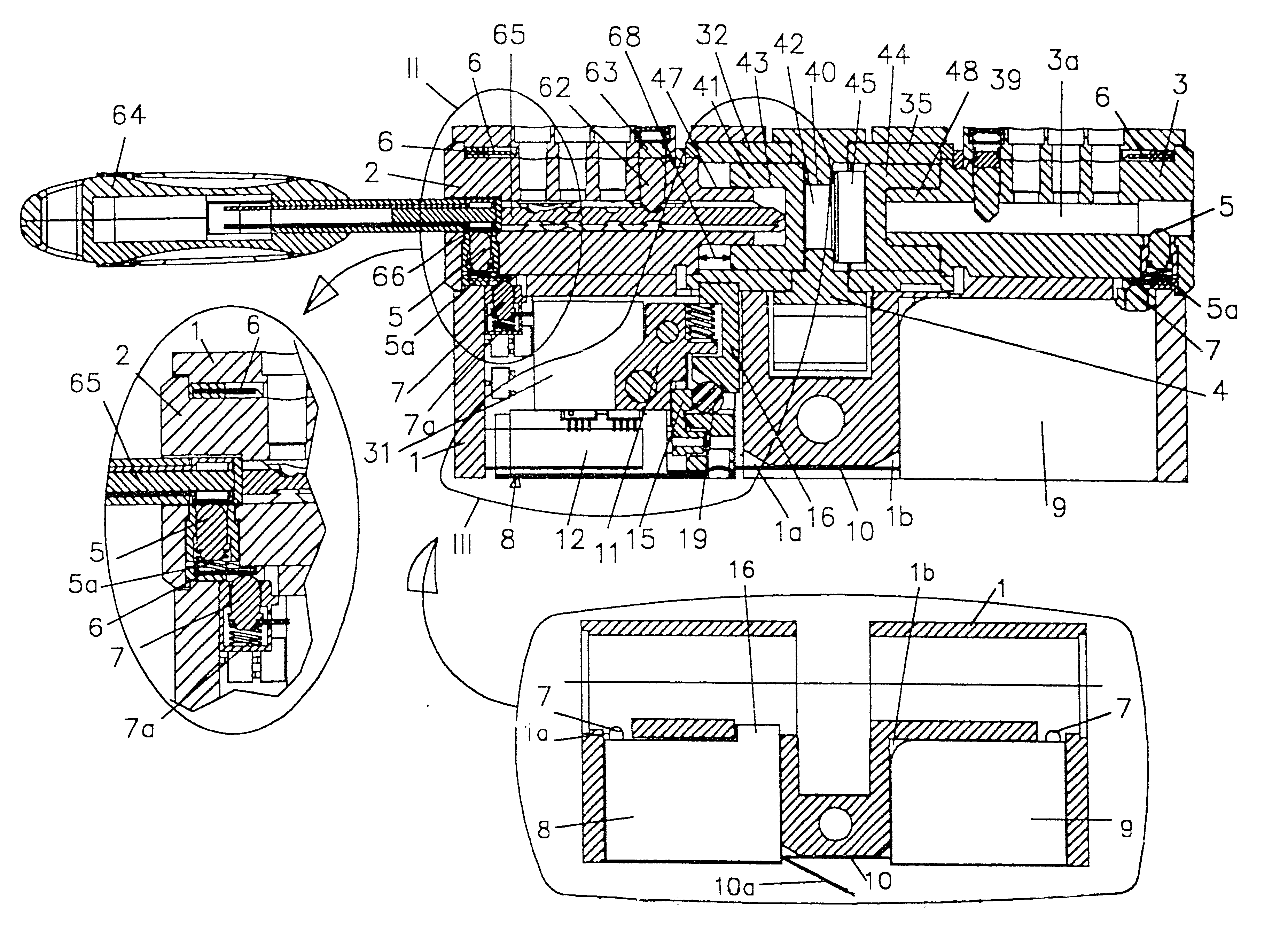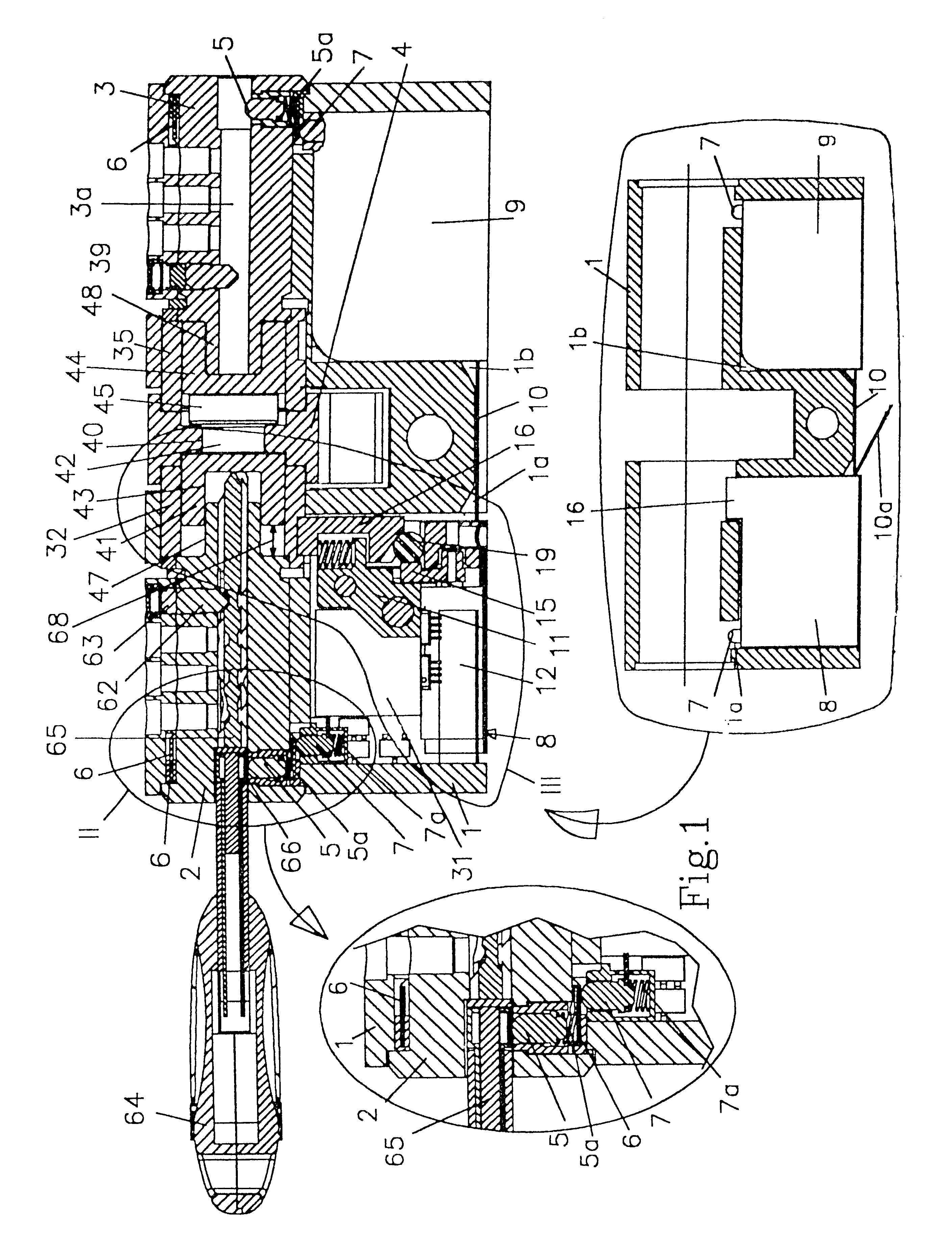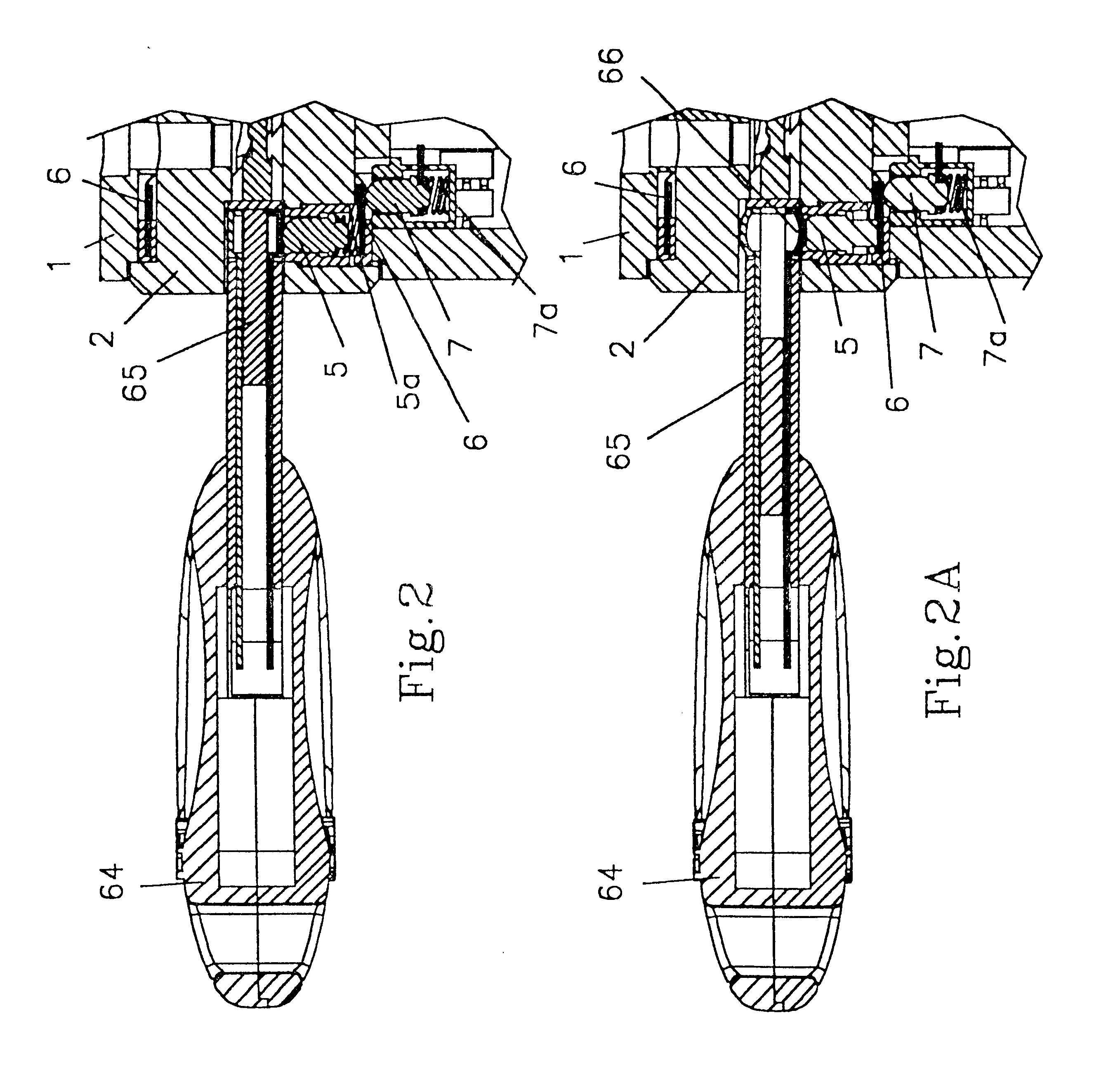Locking cylinder
- Summary
- Abstract
- Description
- Claims
- Application Information
AI Technical Summary
Problems solved by technology
Method used
Image
Examples
Embodiment Construction
FIG. 1 shows a preferred form of embodiment of the new cylinder to be actuated by means of an electronic key (64) both externally as well as internally of the lock; this electronic cylinder comprises: a static double-body frame (1), of European profile in the form of a pear, for activation of the cylinder from the external and internal sides of the lock; each having external (2) and internal (3) rotational cores or rotors, which rotate in the recess of said two bodies of the static frame (1) and each of which possess a channel (2a, 3a) for introduction of blade (65) of a corresponding electronic key (64) provided with an interactive electronic circuit that can be coded electronically; an electrical contact (5) located in a radial housing in each of said external (2) and internal (3) rotors that communicates with its said key channel (2a, 3a) coinciding with the place where either one of the two electrical terminals (66) arranged opposite one another on blade (65) of said electronic ...
PUM
 Login to View More
Login to View More Abstract
Description
Claims
Application Information
 Login to View More
Login to View More - R&D Engineer
- R&D Manager
- IP Professional
- Industry Leading Data Capabilities
- Powerful AI technology
- Patent DNA Extraction
Browse by: Latest US Patents, China's latest patents, Technical Efficacy Thesaurus, Application Domain, Technology Topic, Popular Technical Reports.
© 2024 PatSnap. All rights reserved.Legal|Privacy policy|Modern Slavery Act Transparency Statement|Sitemap|About US| Contact US: help@patsnap.com










